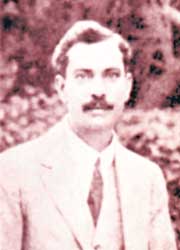It's the Poppy Month
Every year in the month of November we see a lot of motor cars carrying a wreath of artificial red flowers fixed on to the engine. Even single flowers are sold, generally by ex-army personnel. Everyone calls it the poppy flower and it is worn in memory of those who sacrificed their lives for us during wars.
Poppy Day is observed on the second Sunday of November. It is another name for 'Remembrance Day,' which is a special day set aside to remember all those men and women who were killed during the two World Wars and other conflicts. They are remembered in the UK and other former British colonies which today are members of the Commonwealth.
The day is observed in Sri Lanka too, when those who served in these wars (ex-servicemen as they are called) meet at the War Memorial in Colombo (near the Public Library) to remember the war heroes.
The Armistice at the end of the First World War of 1914 – 1918 was signed on November 11, at precisely 11 a.m. For this reason, 'Remembrance Day' is on November 11 each year although church services and many parades are held on the Sunday nearest to that date.
The eleventh hour of the eleventh day of the eleventh month in the year 1918 thus marks the signing of the Armistice.
At 11 a.m. on November 11, 1918 the guns of the Western Front fell silent after more than four years continuous warfare.
At one time the day was known as Armistice Day and was renamed Remembrance Day after the Second World War.
The Poppy was adopted as the symbol of remembrance because it was so widespread on the sites of the battlefields of Europe, after the First World War. The seeds of the common Field Poppy (Papaver rhoeas) germinate best in newly-cultivated soil, which is why it was such a common weed of cornfields until the widespread use of selective weed-killers relegated it to a wayside flower. |



